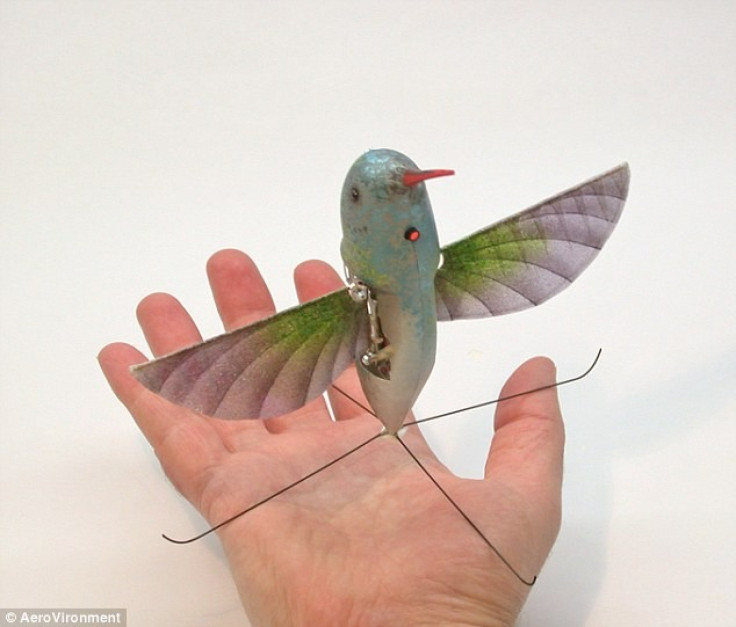US Army test-flies 16-centimeter hummingbird drone spy

Tech company AeroVironment, Inc has announced successful flight trials of the tiny robot spy Hummingbird prototype, which the company has been working on since 2006.
The hand-made prototype aircraft has a wingspan of 16 centimeters (6.5 inches) tip-to-tip and has a total flying weight of 19 grams (2/3 ounce), which is less than the weight of a common AA battery. This includes all the systems required for flight; batteries, motors, communications systems and video camera. The aircraft can be fitted with a removable body fairing, which is shaped to have the appearance of a real hummingbird, the statement said.
The mini spy plane can fly up to 11 miles an hour and took five years to develop at a cost of $4million.
The Nano humming bird is part of the Phase II contract awarded by the Defense Advanced Research Projects Agency (DARPA) for the Nano Air Vehicle (NAV) program and has both whimsy and espionage potential.
The final concept demonstrator is called the 'Nano Hummingbird' and is capable of climbing and descending vertically, flying sideways left and right, flying forward and backward, as well as rotating clockwise and counter-clockwise, under remote control and carrying a video camera payload. During the demonstration, the Nano Hummingbird flew in and out of a building through a normal-size doorway, the company said in a statement.
The aircraft is larger and heavier than an average hummingbird, but is smaller and lighter than the largest hummingbird currently found in nature, it added.
The success of the Nano Hummingbird was highly dependent on the intense combination of creative, scientific, and artistic problem-solving skills from the many AV team members, aided by a philosophy of continuous learning, which we feel was only possible due to the unique R&D environment here at AV, said Matt Keennon, AV's project manager and principal investigator on the NAV project.
The miniaturization of drones is where it really gets interesting, Peter W. Singer, defense expert and author of Wired for War, a book about robotic warfare, told the Los Angeles Times. You can use these things anywhere, put them anyplace, and the target will never even know they're being watched. See the Nano Hummingbird in action.
© Copyright IBTimes 2024. All rights reserved.











